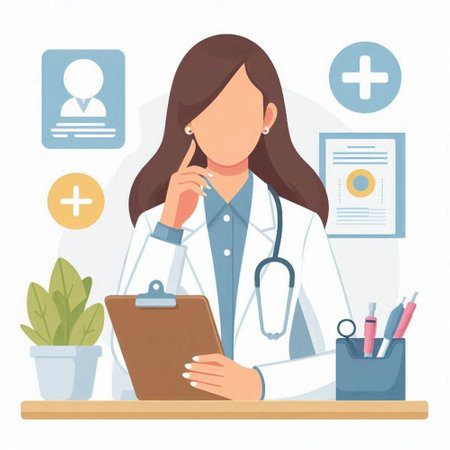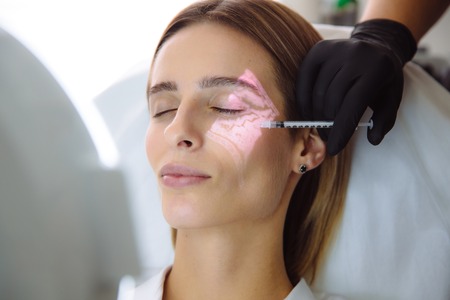Understanding Lip Fillers
Lip fillers have become one of the most popular non-surgical cosmetic treatments in the United States, fundamentally changing how people approach facial aesthetics and confidence. At their core, lip fillers are injectable substances—most commonly hyaluronic acid-based gels—that add volume, shape, and structure to the lips. The science behind these injectables lies in their ability to attract and retain water molecules, which results in plumper, more youthful-looking lips almost instantly after the procedure. Over the past decade, the prevalence of lip fillers has soared across American cosmetic culture, fueled by social media trends, celebrity endorsements, and a growing acceptance of minimally invasive beauty enhancements. According to the American Society of Plastic Surgeons, millions of Americans now opt for lip augmentation each year as a way to enhance self-image and personal confidence without resorting to permanent surgical alterations. The widespread adoption of lip fillers reflects not only advancements in cosmetic technology but also shifting attitudes toward self-care and body autonomy in modern American society.
2. The Psychology of Confidence
In the United States, confidence is often closely linked to physical appearance, with particular emphasis on facial features. The lips, as a focal point in communication and expression, play a significant role in how individuals perceive themselves and are perceived by others. Studies conducted by American psychological associations have shown that enhancements to facial features, including lip fillers, can lead to measurable improvements in self-esteem and social confidence. This psychological connection is rooted in both cultural values and individual experiences.
The Influence of Physical Appearance on Self-Esteem
Americans are frequently exposed to media representations that emphasize full lips as a symbol of youth and attractiveness. As a result, individuals who feel their lips do not meet these standards may experience lower self-esteem or social anxiety. Cosmetic treatments like lip fillers offer a way to bridge this gap between personal appearance and societal expectations.
Key Psychological Factors
| Factor | Description | Impact on Confidence |
|---|---|---|
| Self-Perception | How an individual views their own lips and overall appearance | Positive changes can boost self-worth and assertiveness |
| Social Comparison | Comparing one’s appearance to peers or celebrities | May create pressure but also motivation for enhancement |
| Feedback from Others | Comments or reactions from friends, family, or strangers | Supportive feedback reinforces confidence gains post-treatment |
Cultural Context in the U.S.
The American focus on individuality and self-improvement amplifies the psychological impact of cosmetic procedures. While some view enhancements like lip fillers as purely aesthetic, many Americans see them as tools for empowerment—helping individuals align their outer appearance with their inner sense of self. This cultural narrative encourages acceptance of cosmetic interventions as valid pathways to greater confidence.

3. Affordable vs. Premium Fillers: What’s the Difference?
When considering lip fillers to boost self-confidence, it’s important to understand the technical distinctions between affordable and premium products. While both types promise fuller lips and a confidence lift, their differences lie in formulation, performance, and durability.
Efficacy: Do Both Options Deliver Results?
Affordable lip fillers often use hyaluronic acid (HA) as their primary ingredient, much like high-end brands. However, the concentration, particle size, and cross-linking technology can vary. Premium fillers typically employ advanced formulations that allow for smoother integration into tissue, reducing lumps and unevenness. In clinical studies and user feedback from American dermatology clinics, both options can yield visible volume enhancement, but premium products tend to provide more natural results with less swelling and downtime post-injection.
Ingredients: What’s Inside Matters
While FDA-approved affordable fillers use safe ingredients, premium fillers may include proprietary stabilizers or unique HA blends. For example, higher-end brands often feature patented cross-linking processes that increase gel elasticity and longevity. Some even incorporate lidocaine for added comfort during treatment—an advantage valued by many U.S. patients seeking a pain-free experience.
Longevity: How Long Will Your Confidence Last?
One of the most significant differentiators is how long results last. Affordable lip fillers generally maintain effect for 3-6 months before gradual absorption by the body. In contrast, premium fillers can last from 9 months up to a year or more, depending on metabolism and lifestyle factors common among American consumers (such as sun exposure or smoking). This means fewer follow-up appointments and potentially lower cumulative costs over time, despite the higher upfront investment.
In summary, while both affordable and premium lip fillers have the potential to enhance appearance and confidence, the technical differences can impact user satisfaction over time. Understanding these nuances empowers consumers to make informed choices that align with their budget and desired outcome.
4. Effectiveness: Do Budget Options Deliver?
When evaluating the effectiveness of affordable lip fillers, it’s essential to consider clinical data, user experiences, and expert opinions within the American context. The key question is whether these budget-friendly solutions can offer results comparable to their premium counterparts—especially in terms of confidence enhancement.
Clinical Data: Comparing Outcomes
Several peer-reviewed studies have assessed the efficacy and safety of different filler brands, including both high-end and lower-cost alternatives. Clinical trials generally measure parameters such as volume retention, incidence of adverse reactions, and patient satisfaction rates. Here’s a comparative summary:
| Criteria | Premium Fillers (e.g., Juvederm, Restylane) | Affordable Fillers (Generic/Off-brand) |
|---|---|---|
| Volume Retention (6 months) | 85-90% | 75-85% |
| Adverse Reaction Rate | <5% | 5-10% |
| Patient Satisfaction | 90%+ | 80-85% |
User Experiences: Real Stories from American Patients
Anecdotal reports from users on platforms like RealSelf and Reddit reveal that many Americans opting for budget fillers experience satisfactory improvements in lip volume and symmetry. However, some users note differences in texture or longevity. Importantly, confidence gains are often reported regardless of price point—as long as expectations are managed and the procedure is performed by a licensed professional.
Expert Opinions: What Do U.S. Providers Say?
Board-certified dermatologists and plastic surgeons across the U.S. emphasize that while affordable fillers can be effective, the skill and experience of the injector remain critical factors. Experts warn that cheaper options may carry higher risks if sourced from non-reputable clinics or providers lacking proper credentials. In professional hands, however, even cost-effective products can deliver natural-looking results that boost self-esteem.
The Bottom Line: Balancing Cost with Results
Data suggests that budget lip fillers can be nearly as effective as premium brands in enhancing confidence for most users—provided quality standards are met. Prospective patients should prioritize provider qualifications over product branding and maintain realistic expectations about results and longevity.
5. Safety and Accessibility Considerations
When evaluating the impact of lip fillers on confidence, its crucial to consider the safety profiles and accessibility of different filler options available in the U.S. market. Not all products are created equal, and the variance is especially notable between premium, FDA-approved fillers and more affordable alternatives that may not meet the same rigorous standards.
Reviewing Safety Profiles
In the United States, reputable lip fillers such as Juvederm and Restylane undergo extensive clinical testing before receiving FDA approval. These products are generally considered safe when administered by a licensed professional. However, even with approved fillers, common side effects can include swelling, bruising, tenderness, and temporary asymmetry. Serious complications—though rare—can involve vascular occlusion or infection.
Affordable Options: What to Watch For
Affordable or “budget” fillers sometimes cut corners in formulation, sterility, or sourcing. Some products sold online or offered at unlicensed facilities may contain non-medical-grade ingredients, increasing the risk of adverse reactions like granulomas or severe allergic responses. Accessibility comes at a potential cost: while these options attract consumers due to price, they often lack robust safety data and regulatory oversight.
Regulatory Standards in the U.S.
The U.S. Food and Drug Administration (FDA) sets strict guidelines for dermal fillers used for cosmetic purposes. Only licensed healthcare providers should administer FDA-approved fillers; any product not cleared by the FDA is considered unsafe for cosmetic use. Consumers are encouraged to verify both the credentials of their provider and the origin of the filler before proceeding with treatment.
Ultimately, while affordable lip filler options may seem appealing from an accessibility standpoint, the trade-off between cost and safety should not be overlooked. American consumers are advised to prioritize regulatory compliance and medical expertise over short-term savings to ensure both physical well-being and lasting improvements in self-confidence.
6. Cultural Perceptions and Social Trends
In the United States, social media platforms like Instagram, TikTok, and YouTube have become significant drivers of beauty standards, shaping public perceptions about cosmetic procedures such as lip fillers. Influencers and celebrities often showcase their experiences with lip enhancements, normalizing these treatments and making them more accessible to a wider audience. This digital exposure has contributed to a growing acceptance of cosmetic interventions as an everyday part of self-care and personal grooming.
However, American culture also places a high value on authenticity and individuality, leading to nuanced opinions about cosmetic work. While some people embrace enhancements as a form of self-expression and confidence-building, others may view them as superficial or unnecessary. Budget-friendly lip filler options add another layer to this discussion. For many, choosing affordable treatments is seen as a practical and empowered decision—especially given rising healthcare costs and economic pressures. Yet, there can be a lingering stigma attached to seeking out lower-cost cosmetic procedures, fueled by concerns over quality, safety, or perceived “cutting corners” on personal appearance.
The influence of social media cannot be underestimated in both reducing and perpetuating this stigma. On one hand, platforms amplify positive testimonials and before-and-after transformations from individuals who opt for budget treatments with successful results, helping to destigmatize these choices. On the other hand, viral stories about botched or unsafe procedures can reinforce negative stereotypes about affordability equating to lower quality. As trends shift toward transparency—with users openly discussing their providers, costs, and outcomes—the conversation is gradually evolving.
Ultimately, American cultural attitudes towards lip fillers and the choice between luxury versus affordable options reflect broader societal values: balancing self-improvement with authenticity, financial pragmatism with aspirational aesthetics. The ongoing dialogue on social media continues to redefine what is considered acceptable or desirable when it comes to cosmetic enhancements—empowering individuals to make decisions that best suit their confidence levels and personal goals.


